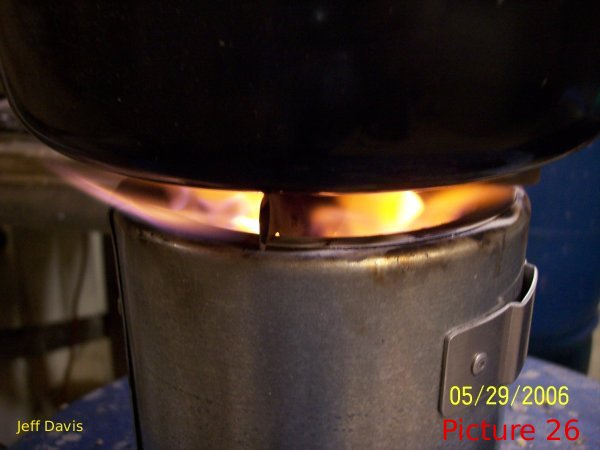 Picture #26
Picture #26
PondScumGas Stove?
I would have liked to call this article the "Alga Fireball" but the subject material is more precisely described as pond scum because it is a mixture of biomass that is found floating on ponds. Pond scum is a common name given to algae found on the surface of ponds. This material is native to Erie County, PA, USA. In reality, I have found it to be a combination of algae, leaves, small branches, etc. This sample also had a course hair like aquatic plant material, I'm not sure if this is alga. The purpose of this experiment is to ascertain whether this material can be used for fireball feedstock or any other briquetting method.
If one searches the Internet for this species of biomass, you will find many articles on how to kill it, for some reason people harbor some kind of ill prejudice toward it. I find this difficult to understand, especially when one considers that algae takes in light and CO2 then converts this to oxygen and biomass. Furthermore it may be responsible for creating a portion of our oil reserves, just to mention a few of it's features, but why waste precious time trying to understand the irrational mind when there is meaningful work to be done.
Because of a shortage of time I must break this article into an unknown number of articles. This article, part 1, will deal with how I processed the material into fuel feedstock. I did not use an agglomerator to form the fireballs because we are only examining the material, feedstock, that could possible be used for fireballs or other briquetting methods.
First I harvested about a five gallon bucket of pond scum with the simple aid of a lawn rake. The next step was to process it through a garbage disposal. The pond scum, at this point, seemed too course for fireball feedstock, this can be seen in picture #16 (#16 is the first picture in this article). I did make a fireball, by hand, from this material. It did bond OK but seemed to be a vary low density fireball. There is no picture of this fireball in this article but maybe I'll include one in part 2.
After the disposal processing, the material was processed in a kitchen blender, that can be seen in picture #17. Next, it was somewhat dewatered on a rag fastened on top a bucket, as you can see in picture #18.
In picture #19, you can see what it looks like after my simple dewatering process. This material hold more water than other material that I have worked with. More of the water should have been removed before forming the pseudo fireballs. What I mean by pseudo is that the fireballs were not made in a agglomerator hence not a true fireball.
In addition to forming pseudo fireballs, I also formed pancakes out of the reduced pond scum. Picture # 20 shows the wet material placed in a form, plastic lid. It has been dried in picture #22. This was a small effort to explore the possibilities of pressureless compaction/granulation agglomeration method. In other words; make a large sheet of dried pond scum and later reduce it into smaller pieces. One can observe from the pictures that the pseudo fireballs are denser. The pancakes tear when they dry. So during the drying period, they tend to become more porous but the fireballs tend to tighten up.
Algae has been reported to be a binder and in picture #21 one can see that the pond scum has bonded well to another plastic form. The plastic form in picture #20 and #22 has kind of a waxy surface hence it did not bond well to this form. Possibly pond scum could be use instead of starch for the binder that is used in the charcoal fireballs.
In pictures #23, #24 and #25 you can see the pseudo fireballs that were made from this material.
Picture #26 is my lead in picture for part 2 of this article. Here you can see a Woodgas Stove and pond scum pseudo fireballs at work.
Jeff Davis
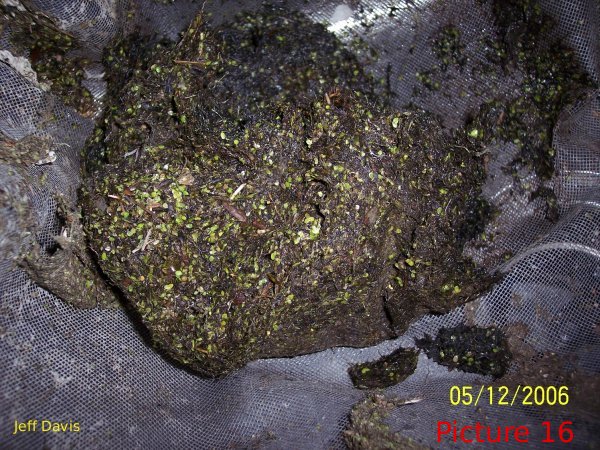 Picture #16
Picture #16
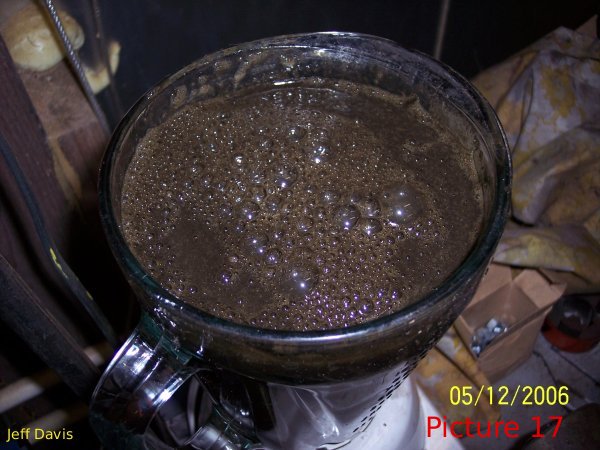 Picture #17
Picture #17
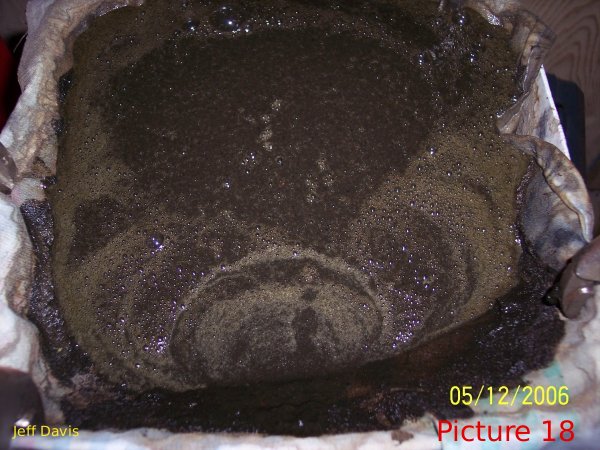 Picture #18
Picture #18
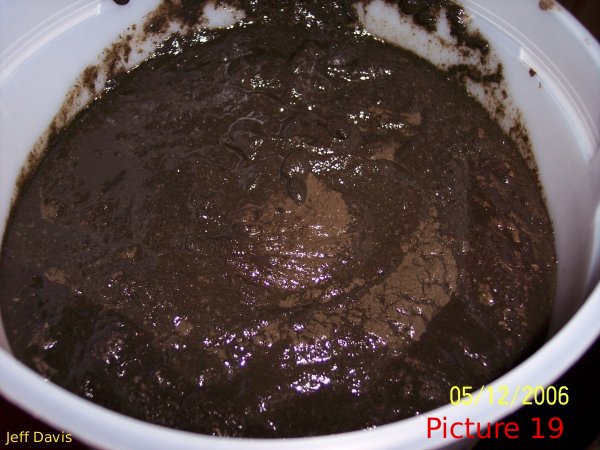 Picture #19
Picture #19
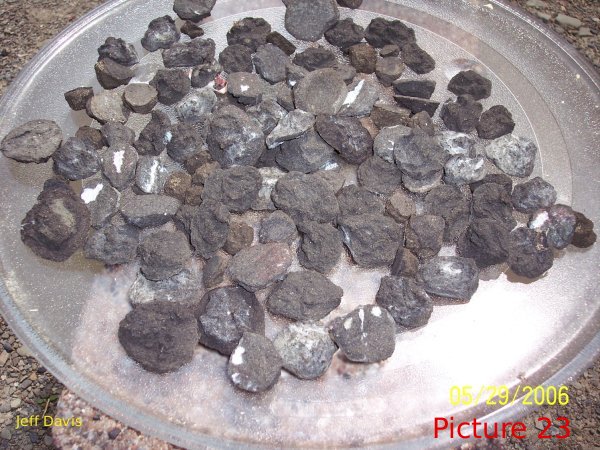 Picture #23
Picture #23
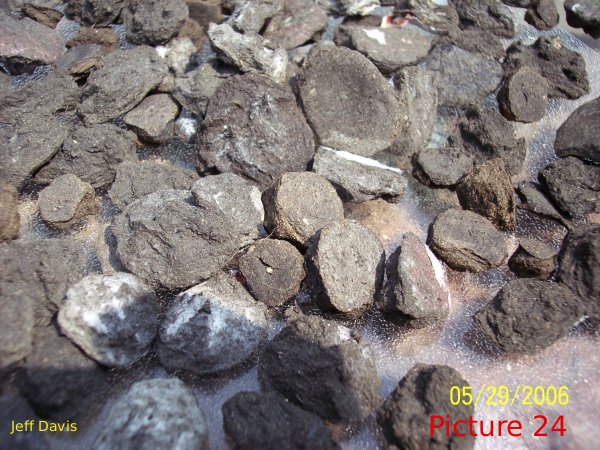 Picture #24
Picture #24
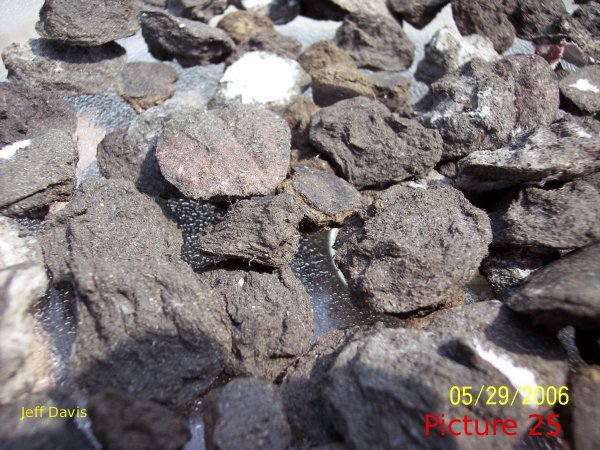 Picture #25
Picture #25
 Picture #26Entrainement Nike
Picture #26Entrainement Nike

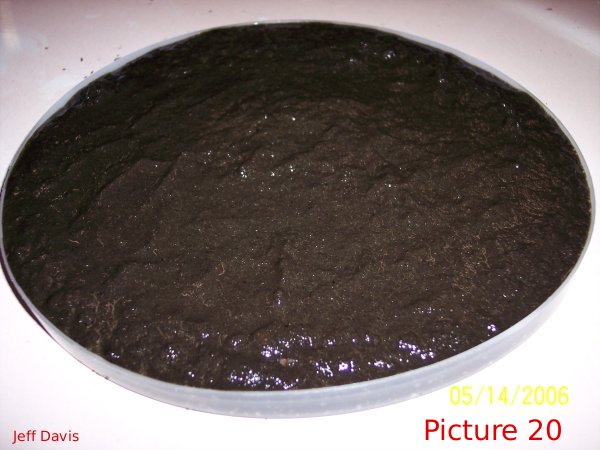
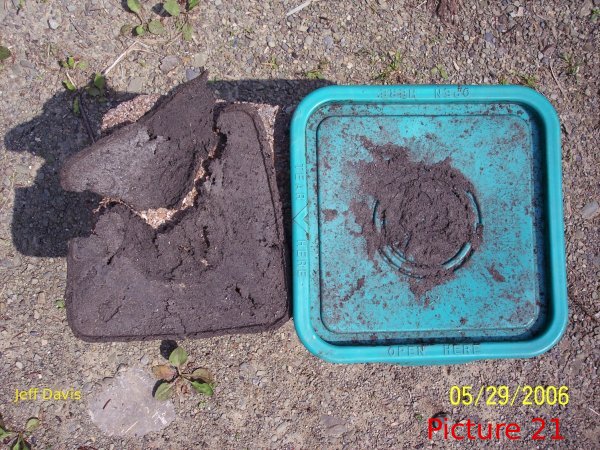
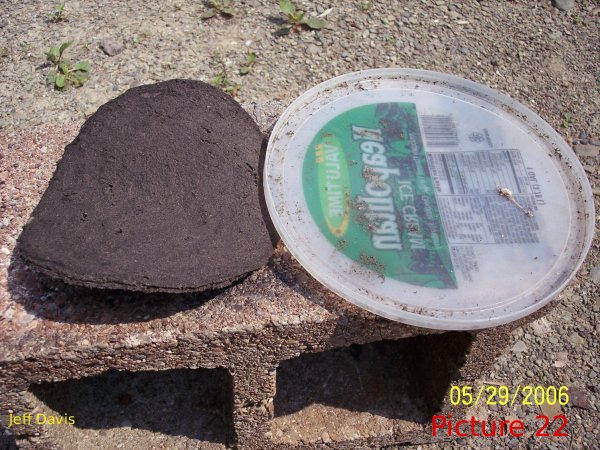
Comments
Jeff Davis replied on Permalink
Biodiesel From Algae
Dear Toms et. al,
Those pond scum fireballs also may well be our main biodiesel source
for the future Reportedly, selected type of Algae yields 37 to 50
times greater yield over rape seed, per unit land area occupied.
Its only happening in carefully controlled raised pond/tanks at this
time but it will soon break the surface for broad application. Then
what to do with the said scum as the natural byproduct of this ?
Why not adapt the same mechanism to make the briquette directly ?
The conventional oil press / expellor squeezes out the oil through a
series of cage bars aligned long axis to the barrel. The back pressure
is developed and the de-oiled cake is broken up, through use of an
adjustable (screw in/out) cone shaped stop at the end of the barrel.
If one were to remove this conical end, relying upon the simple back
pressure generated by friction against extended barrel, One would still
retain the oil expelor feature while gaining the cake in tact as a
cylindrical briquette.
fire fuel and fire balls ?
What do you all think ?
Richard Stanley
Jeff Davis replied on Permalink
PetroSun Announces Formation of Algae BioFuels
Australia.
Current News
PetroSun Announces Formation of Algae BioFuels
PetroSun Drilling Inc. (PSUD - News), an emerging provider of oilfield
services to major and independent producers of oil and natural gas,
announced today that the company has formed Algae BioFuels Inc. as a
wholly owned subsidiary. Algae BioFuels will be engaged in the research and development of algae cultivation as an energy source in the production of biodiesel, an economically feasible and eco-friendly alternative to petroleum-based transportation fuels. The R&D and production facilities for Algae BioFuels will be based in Arizona and Australia.
"PetroSun's formation of Algae BioFuels is a forward-looking strategy," said L. Rayfield Wright, president of PetroSun. "The 0pp0rtunity to produce a renewable energy product that will assist in providing a healthier planet for future generations cannot be ignored." Biofuel is any fuel that is derived from biomass -- which contains recently living organisms or their metabolic byproducts. Biofuel is a renewable energy source, unlike other natural resources such as petroleum, coal and nuclear fuels. Agricultural products specifically grown for use as biofuels include corn and soybeans.
Extensive research is currently being conducted to determine the
utilization of microalgae as an energy source, with applications being
developed for biodiesel, ethanol, methanol, methane and even hydrogen.
Independent studies have demonstrated that algae is capable of
producing 30 times more oil per acre than the current crops now utilized for the production of biofuels. Algae biofuel contains no sulfur, is non-toxic and highly biodegradable.
The Office of Fuels Development, a division of the Department of
Energy, funded a program from 1978 through 1996 under the National
Renewable Energy Laboratory known as the "Aquatic Species Program." The focus of this program was to investigate high-oil algae that could be grown specifically for the purpose of wide-scale biodiesel production. Some species of algae are ideally suited to biodiesel production due to their high oil content, in excess of 50%, and extremely rapid growth rates.
One of the biggest advantages of biodiesel, compared to many other
alternative transportation fuels, is that it can be used in existing
diesel engines, which relieves automotive manufacturers of having to make costly engine modifications. Biodiesel can also be mixed, at any ratio, with conventional petroleum diesel. As a result, the alternative fuel can be used in the current distribution infrastructure, replacing petroleum diesel either wholly, or as a diesel fuel blend with minimal integration costs.
About PetroSun
PetroSun's current operations are concentrated in the Ark-La-Tex region with plans to expand into New Mexico, Arizona, Utah and Australia in 2006. PetroSun provides a comprehensive array of products and services to the oil industry. The company's cutting-edge technologies, combined with a proven ability to apply them effectively and safely within a disciplined ROI framework, creates long-term value for PetroSun shareholders and partners. PetroSun is headquartered in Phoenix.